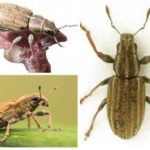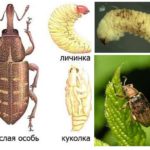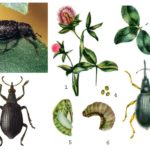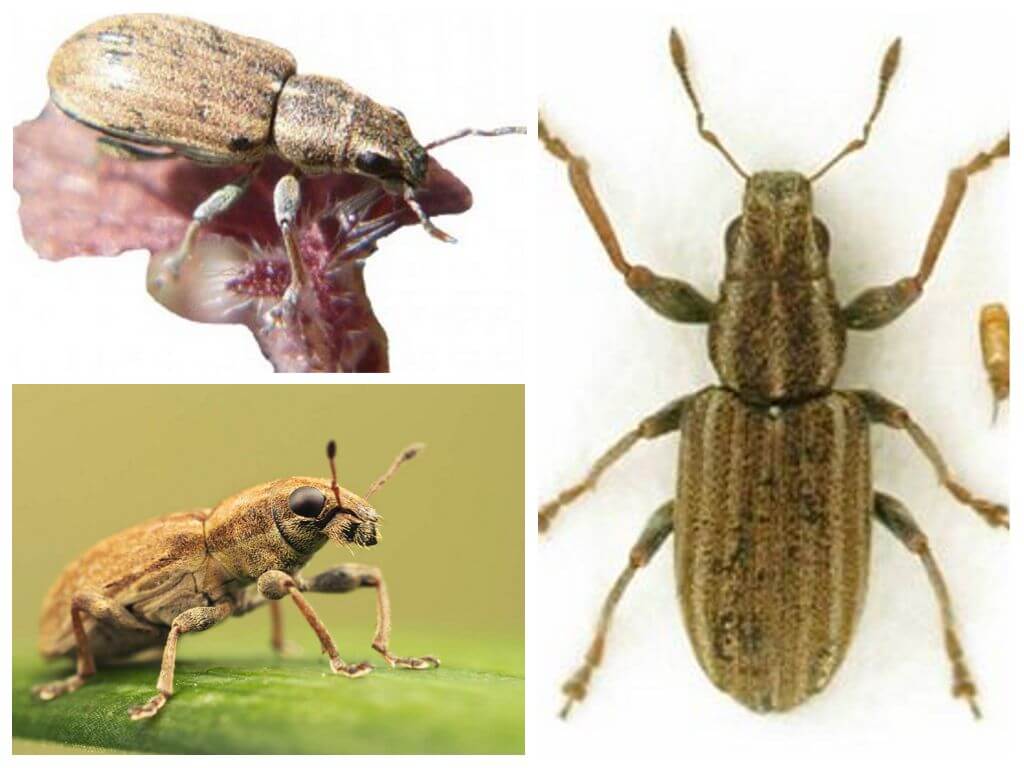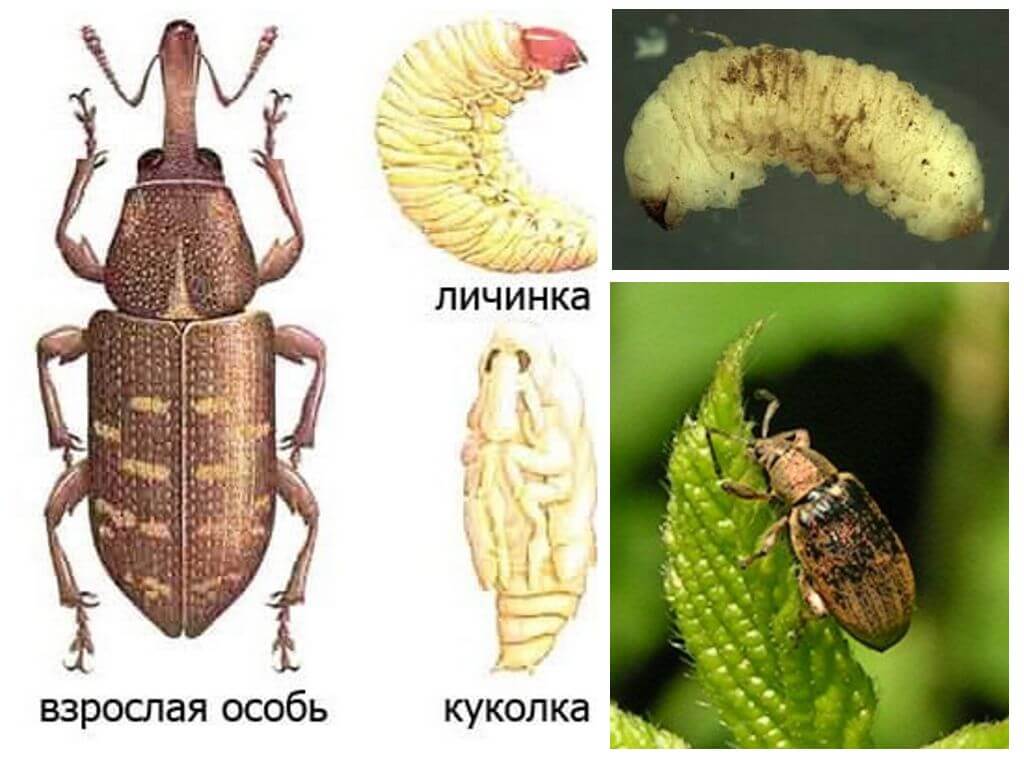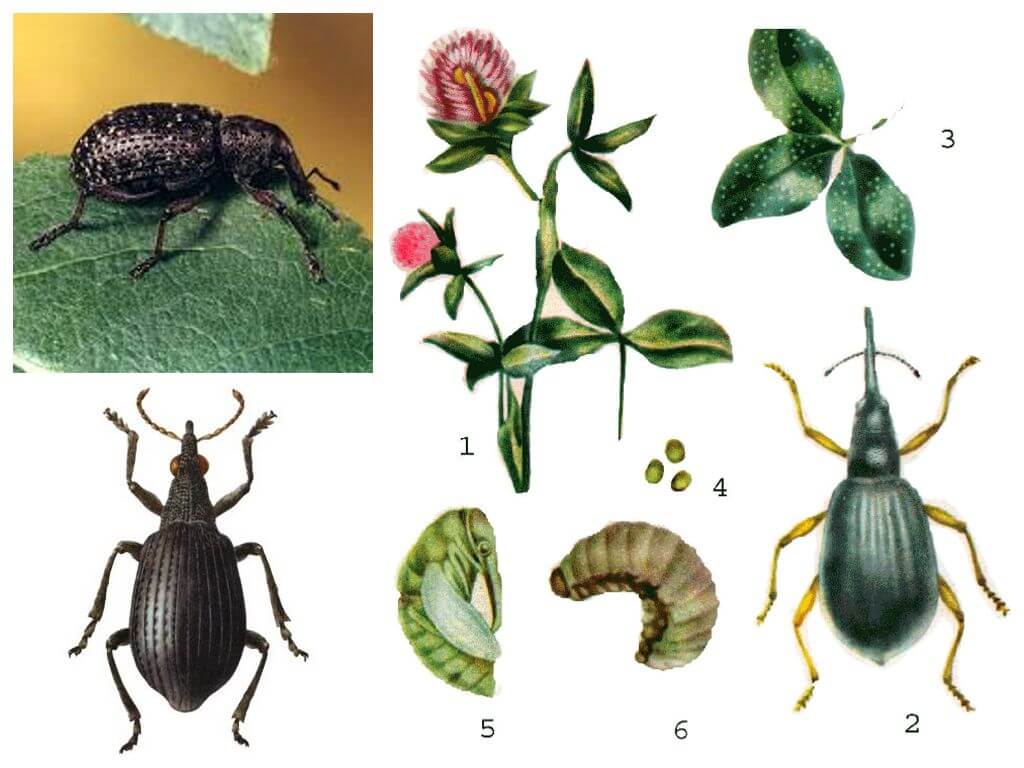Tuber weevil - pest of legumes
Content
- Tuber weevils
- Larvae of the nodule weevil
- Clover nodule weevils
Tuber weevils - The generalized name of the family of beetles, in which there are about 100 species. You can meet insects only on legumes. Young larvae infect the nodules and roots of plants, and adult beetles gnaw leaves and growth points.If you do not take measures to combat pests, the yield of green mass and seeds is reduced several times.
Biological features of beetles
Insects are common throughout Europe with a warm climate. Most species of nodule weevils winter in the adult insect phase, and only certain species spend the winter months in the larvae stage. Adult beetle sizes range from 3 to 8 mm. Nodule weevil has a number of distinctive features:
- a small rostrum nearly square;
- elytra covered with setae and scales of light gray shades;
- bulging eyes with cilia in white or black;
- legs red with claws;
- the oval back is decorated with dark stripes or spots.
There are no obvious differences, except for the structure of the genital organs, in females and males.
Interesting!
Tuber-weevil is a very shy creature. Sensing danger, it mimics a dead insect.
With the onset of spring at a temperature of + 5 ° C, the awakening of insects begins. However, their activity is manifested in warmer weather conditions, when the thermometer reaches the mark of + 15 ° С.Tuber weevils begin to migrate in search of pea plantations, fields planted with alfalfa, vetch, beans, lentils. The settlement period lasts from 5 to 20 days and depends on weather conditions. In cloudy or rainy weather years weevils not observed, however, on hot days the settlement of crops occurs rapidly. Flew beetles can cause significant damage to seedlings. According to the observations of biologists after settling insects are sedentary.
After the winter, adult beetles need food and devour the young upper leaves of leguminous crops. They do it a little sophisticated, figuratively gnawing ovals on the edges of the foliage. There are cases when numerous colonies of weevils completely destroyed the leaves on pea shoots and other leguminous plants.
Interesting!
The female is more voracious than the male almost three times. On average, it gnaws on a sheet of 10 mm², and the male only 3.3 mm². A particularly hungry individual can eat up to 16 mm² per day.
Reproduction and development of weevils
Tuber weevils are famous not only for gluttony, but also for fecundity. Ovipositions begin in late spring.One female lays up to 30 eggs per day, in her short life she is able to produce up to 30 egg-laying. The female does not select special places and scatters eggs randomly. Initially, the embryos have a light color and are covered with a sticky shell that holds the eggs on the leaves, stems. Gradually they roll to the ground, become almost black in color and during the rains they mix with the soil.
Important!
Temperatures above 32 ° C and the absence of rain lead to a massive death of eggs. Temperature and humidity levels also affect the development of embryos.
The development of an egg lasts from 6 to 30 days, then a mobile legless larva with a little head and no eyes appears from it. A young insect climbs under the soil, where it finds plant nodules. Determine the place of entry of the larvae can be on a dark spot. Penetrating into the nodule, it begins to absorb all the contents. After one shell remains from the tuber, the larva moves to the next. In the larval phase, one insect kills 5-6 nodules.
After eating several nodules, the larva grows in size and does not fit in the tubers, so it begins to eat the outer tissues of the roots. On one plant of peas at the same time there can be up to 20 young individuals.The development of larvae lasts from 25 to 40 days, depending on the climate of the habitat and weather conditions. A ripe larva buries itself in the soil to a depth of 10–15 cm and makes itself a cradle for pupation. After 9-14 days, a young beetle emerges from the pupa. The newborn nodule weevil begins to feed heavily and eats juicy leaves of peas, alfalfa wiki. After harvesting annual crops, insects fly over to perennial legumes, where they remain for the winter.
Common nodule weevils
The most numerous and widespread species is the striped nodule weevil. Distributed in Europe and Asia. The length of the beetle does not exceed 6 mm, and it can be distinguished from other weevils by the absence of cilia. There are nodule weevils on peas, lentils, less often on alfalfa and clover.
Nodule stubby weevil rarely grows larger than 4.5 mm. Above the bulging eyes are white cilia. Elytra densely covered with short black setae and long white hairs. It prefers to grow on peas, clovers and annual pulses.
Yellow-footed weevil is covered with numerous indentations and is distinguished by flat eyes. Distributed in the European part of the country and in the North Caucasus.Clover and alfalfa are preferred.
Clover nodule weevil is the smallest representative of a large family of pests. Its dimensions barely reach 3 mm. Prothorax is outlined with 3 light lines, body without hairs and bristles. It feeds on clover, for which it received its name.
The pea nodule weevil is a generalized name for pests of pea plants. These include striped and stubby beetles.
Harmfulness and pest control measures
Agricultural plants are damaged by both adult beetles and young larvae. They harm young crops, spoil the root system, which ultimately leads to the death of plants or a decrease in the yield of seeds, green leaf mass. Measures to combat the nodule weevil include agrotechnical measures and chemical methods:
- thorough cleaning of crop residues and plowing the soil;
- soil and seed treatment with insecticidal agents;
- sowing of annual legumes in the early stages;
- regular weed control and soil loosening;
- the destruction of beetles on plants with a solution of barium chloride;
- liming sour soils.
On the plots after harvesting annual leguminous plants leave poisoned bait.

